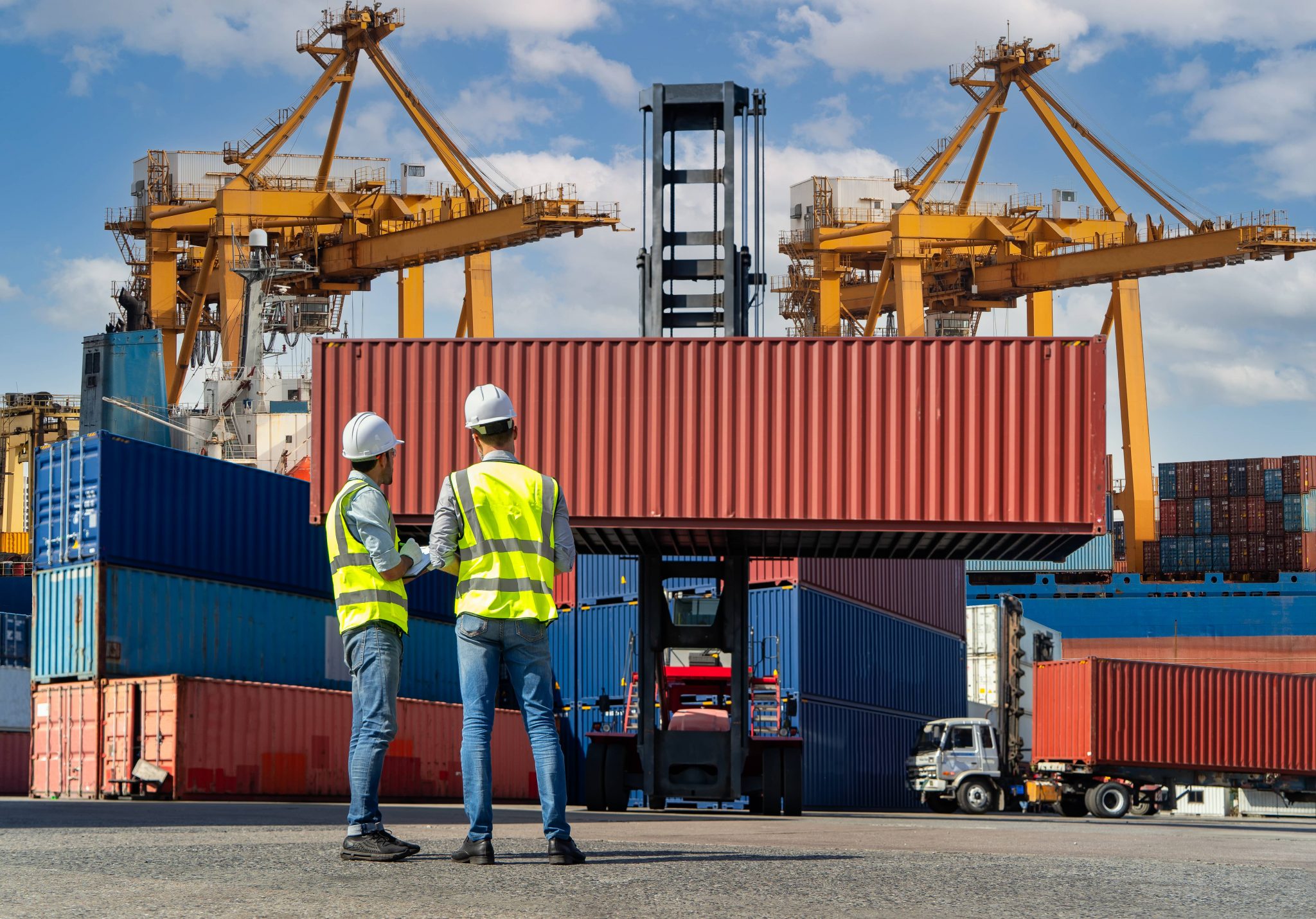Featured Faculty

Hsu, Vernon Ning
Choh-Ming Li Professor of Operations Management
Director, Doctor of Business Administration (DBA) Programme
Featured Faculty

Wu, Jing
Associate Professor
Director, Master of Science Programme in Business Analytics
Director, Institute Development Office, Asian Institute of Supply Chains and Logistics
More in Globalisation ...
Supply chains find new routes amid trade war
• 6 mins read
American companies increasingly reduce risks by shifting their suppliers to replace China with intermediary sources, but “the world’s factory” perseveres
The ongoing trade disputes between China and the US since 2018 have triggered global supply chain disruptions. In response to the decoupling trend between the world’s two largest economies, many American companies are diverting their supply chains to alternative countries to reduce their reliance on China. Before the trade disputes, China saw its share of US imports peaked at 21.6 per cent in 2017.
This percentage dropped to 13.9 per cent in 2023, the lowest level in two decades. In contrast, over the same period, the US saw significant increases in import shares from third-party countries, such as Vietnam and Mexico.
Global supply chains face growing complexities as companies reassess their strategies in light of the US-China trade war. Businesses grapple with balancing efficiency and risk mitigation while identifying reliable and flexible supplier networks. The global supply chain realignment trend reflects shifting trade flows and evolving competitive dynamics among nations.
“Our findings suggest that suppliers in Vietnam and Mexico cannot fully substitute China in an end-to-end capacity and continue to rely on Chinese inputs, resulting in the maintenance of indirect connections between the US and China.”
Professor Wu Jing
The rapid shifts in the global supply chain have raised questions about whether third-party countries possess the same end-to-end supply chain capabilities as China, or if they are merely replacing China in certain segments of the supply chain while still depending on Chinese inputs. These questions open up the possibility that, despite efforts to reduce its supply chain reliance, Uncle Sam is still closely connected to China through third-party countries.
“We find that US importers’ indirect exposure to China through Vietnam increases by approximately 21 per cent, while through Mexico by about 5.5 per cent following the commencement of the trade war,” says Wu Jing, Associate Professor in the Department of Decisions, Operations and Technology at the Chinese University of Hong Kong (CUHK) Business School.
“These results suggest that rather than being replacements for Chinese suppliers with equivalent end-to-end supply chain capabilities, US suppliers in Vietnam and Mexico may instead be intermediaries who retain a strong reliance on Chinese inputs.”

Along with Vernon Hsu, Choh-Ming Li Professor of Operations Management at the same department and his PhD student Peng Boya, Professor Wu investigated the dynamics of indirect supply chain connections in response to the US-China trade war in a recent research titled The paradox of de-risking: Global supply chain rerouting in response to the US-China trade war.
The increased indirect exposure to China
Researchers observed that suppliers for US companies still rely on inputs from China, illustrating the impact of the US-China trade war on indirect supply chain dependencies. “Despite the apparent trade diversion, China’s well-established supply chains continue to exert a significant influence on US global supply chains, even in the presence of trade barriers,” says Professor Wu.
To get to this conclusion, the team developed a novel measure to assess the indirect exposure to China for American importers. This measure considers two key components: the share of US imports from Vietnam and Mexico, and Vietnam and Mexico’s dependence on inputs from China. Although American companies can import from other markets to replace China, both Vietnam and Mexico have emerged as primary beneficiaries of the recent global supply chain reallocation trends, with strategic locations of sharing borders with the conflicting parties.
The researchers examined publicly listed manufacturing firms in the US that engaged in imports from China between 2013 and 2017 before the trade war, and also from either Vietnam between 2018 and 2022, or Mexico between 2016 and 2022. They collected the transaction-level global shipping data from Panjiva, as well as firms’ financial statements and broader economic indicators from Compustat and Orbis.
The results showed that US imports from Vietnam and Mexico and both countries’ imports from China increased following the trade war. Specifically, there has been a substantial increase in the imports of inputs from China among Vietnamese suppliers, surpassing the rise in US imports from Vietnam. However, the increase in the US imports from Mexican suppliers slightly exceeds the increase in Mexican imports from China.
Vietnam: A bridge to downstream goods
Both Vietnam and Mexico stand as viable alternatives for US companies seeking new suppliers, but what sets these two nations apart? Delving deeper into this question, Professor Wu and his team thoroughly analysed the channels influencing product rerouting through either Vietnam or Mexico.

Their investigation unveiled the crucial roles of geography and product characteristics in shaping supply chains. Product characteristics refer to whether products are upstream or downstream and the degree of China’s comparative advantage in their production. Upstream products are raw materials, components, and intermediate goods used in early supply chain stages to create downstream products or finished goods ready for sale.
The results indicated that more downstream goods and products for which China has a greater comparative advantage experience a more significant increase in indirect exposure via Vietnam, particularly in the textile, footwear, and electrical industries.
“China leverages Vietnam as a bridge to continue exporting products that are more downstream—products that typically involve more labour-intensive final assembly and for which it retains a significant comparative advantage,” Professor Wu says. “Vietnam’s proximity to China and comparable cost-effective production capabilities facilitate its smooth integration into Chinese supply chains.”
For instance, the researchers found that Nike witnessed a 153 per cent increase in indirect exposure to China through Vietnam for textile and footwear products after the trade war, but the company seldom imports from Mexico.
Mexico’s advantage in upstream products
Upstream products, particularly in the chemicals, plastics or rubbers, metals, and machinery industries, showed a notable increase in indirect exposure through Mexico. “These upstream products are typically imported into the US to be further integrated into products that are higher-value-added, which require greater supply chain responsiveness for which Mexico’s close proximity to the US is a major advantage,” Professor Wu explains.
Professor Wu further notes that their empirical evidence supports the strategies adopted by American firms in response to the trade disputes.
For example, 3M saw a 20 per cent increase in indirect exposure through Mexico for chemicals, plastics and rubber products and a 47 per cent increase for machinery products. Power management company Eaton’s indirect exposure via Mexico increased by 123 per cent for chemicals, plastics and rubber products, and by 94 per cent for metals products. Both companies have limited interaction with Vietnam.
Reviewing reliance beyond primary suppliers
The study underscores the necessity for reassessing global supply chain risks and dependencies. “It is important to consider sub-tier supply network structures in managing supply chain risks,” says Professor Wu. To fortify supply chains, he recommends that companies review dependencies beyond primary suppliers and proactively assess their supply network’s exposure to key markets.
Moreover, while the US-China trade war has posed challenges for Chinese firms, the researchers note that companies can still capitalise on the third-party countries’ markets as China’s role in the global supply chain remains difficult to fully replace. “Our findings suggest that suppliers in Vietnam and Mexico cannot fully substitute China in an end-to-end capacity and continue to rely on Chinese inputs, resulting in the maintenance of indirect connections between the US and China,” Professor Wu concludes.







